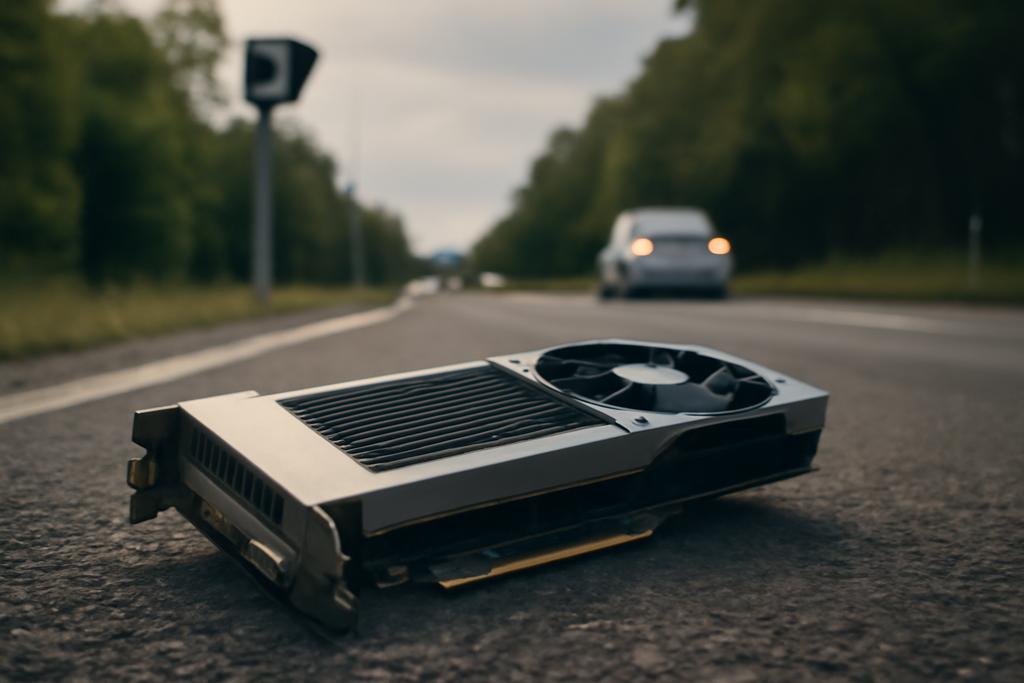Invisible Engines Powering Smarter Roads
In the race to build smarter, safer transportation systems, GPUs—graphics processing units—have become the unsung heroes. These chips, originally designed to render video game graphics, now crunch massive streams of data from roadside cameras, sensors, and autonomous vehicles. They enable real-time object detection, traffic monitoring, and even pedestrian safety alerts. But as GPUs quietly accelerate our roads into the future, a new shadow looms: their security risks remain largely overlooked.
Researchers at Clemson University, led by Ph.D. student Sefatun-Noor Puspa and Professor Mashrur Chowdhury, have uncovered a blind spot in transportation cybersecurity. Their work reveals how GPUs embedded in intelligent transportation systems (ITS) can be hijacked for unauthorized crypto mining, silently draining resources and degrading critical AI workloads without raising alarms. This stealthy misuse threatens not just system performance but the very safety of road users.
GPUs: The Hidden Workhorses of Intelligent Transportation
Modern ITS rely heavily on GPUs to process complex, high-resolution video feeds and sensor data at lightning speed. Whether it’s a roadside unit identifying a jaywalker or an autonomous vehicle mapping its surroundings, GPUs handle the heavy lifting of AI inference and sensor fusion. Unlike CPUs, GPUs excel at parallel processing, making them indispensable for real-time perception tasks that demand both speed and energy efficiency.
Platforms like NVIDIA’s Jetson AGX Orin and RTX series GPUs have become staples in both stationary infrastructure and mobile vehicles. They transform raw data into actionable insights, enabling systems to respond instantly to dynamic traffic conditions. But this power comes with a catch: traditional cybersecurity tools often ignore GPU activity, treating these chips as opaque co-processors rather than integral parts of the system.
The Silent Threat of Crypto Mining on the Road
Unauthorized crypto mining—where attackers hijack computing resources to mine cryptocurrencies without permission—is a well-known threat in cloud and enterprise environments. But Puspa and Chowdhury’s study exposes how this menace has quietly crept into transportation systems. By running crypto miners on GPUs embedded in roadside units or vehicles, attackers can silently consume processing power and energy, causing performance degradation that could have life-or-death consequences.
In their case study, the researchers simulated a roadside AI system running a YOLOv8 video detection pipeline on an NVIDIA RTX 2060 GPU. They then introduced a stealthy crypto miner mining Ravencoin in the background. The results were striking: the frame rate of the video processing pipeline dropped by 50%, and power consumption surged by up to 90%. This means the system’s ability to detect pedestrians or vehicles in real time was cut in half, while the GPU was pushed to near-maximum utilization.
Why This Matters More Than You Think
At first glance, a GPU running hot or slowing down might seem like a technical hiccup. But in transportation, milliseconds matter. A delayed pedestrian detection or a missed red-light violation can translate into accidents or fatalities. The stealthy nature of crypto mining means these issues can persist unnoticed, as traditional security systems fail to monitor GPU workloads effectively.
Moreover, the increased power draw and thermal stress can accelerate hardware degradation, leading to premature failures in devices expected to operate reliably for years in harsh outdoor environments. This silent erosion of system integrity undermines both safety and operational resilience.
Cracking the Code: Detecting GPU Misuse with Telemetry
One of the most hopeful findings from Clemson’s research is that GPU misuse leaves behind detectable fingerprints—if you know where to look. Using built-in telemetry tools like NVIDIA’s nvidia-smi and Nsight Compute, the team monitored GPU metrics such as utilization, power draw, memory usage, and kernel execution times.
By training simple machine learning classifiers on these telemetry features, they achieved perfect accuracy in distinguishing normal workloads from crypto mining activity. This means that even without privileged system access or additional hardware, transportation systems could implement lightweight, on-device monitoring to catch GPU abuse before it impacts safety-critical functions.
Bridging the Security Gap in Intelligent Transportation
The implications of this study extend beyond crypto mining. GPUs could be exploited for covert data theft, denial-of-service attacks, or malicious AI model manipulation—all of which could silently degrade system performance or compromise safety.
Yet, current cybersecurity frameworks for transportation largely overlook GPUs, focusing instead on CPUs, networks, and operating systems. This oversight creates a dangerous blind spot. Puspa and Chowdhury urge the industry to integrate GPU observability into standard security practices, including continuous telemetry monitoring and behavior baselining.
Looking Ahead: Toward Safer, Smarter Roads
As intelligent transportation systems become more reliant on AI and edge computing, securing every component—including GPUs—is paramount. The Clemson team’s work offers a practical blueprint for detecting and mitigating GPU misuse using existing tools and lightweight models. But broader adoption will require collaboration among transportation operators, cybersecurity experts, and GPU manufacturers.
Incorporating GPU-level security into transportation safety standards could prevent silent failures and ensure that the powerful engines behind our smart roads don’t turn rogue. After all, in a world where machines increasingly make split-second decisions that affect human lives, no part of the system can be left in the shadows.
References: This research was conducted by Sefatun-Noor Puspa and Mashrur Chowdhury at Clemson University’s Glenn Department of Civil Engineering, supported by the National Center for Transportation Cybersecurity and Resiliency.










